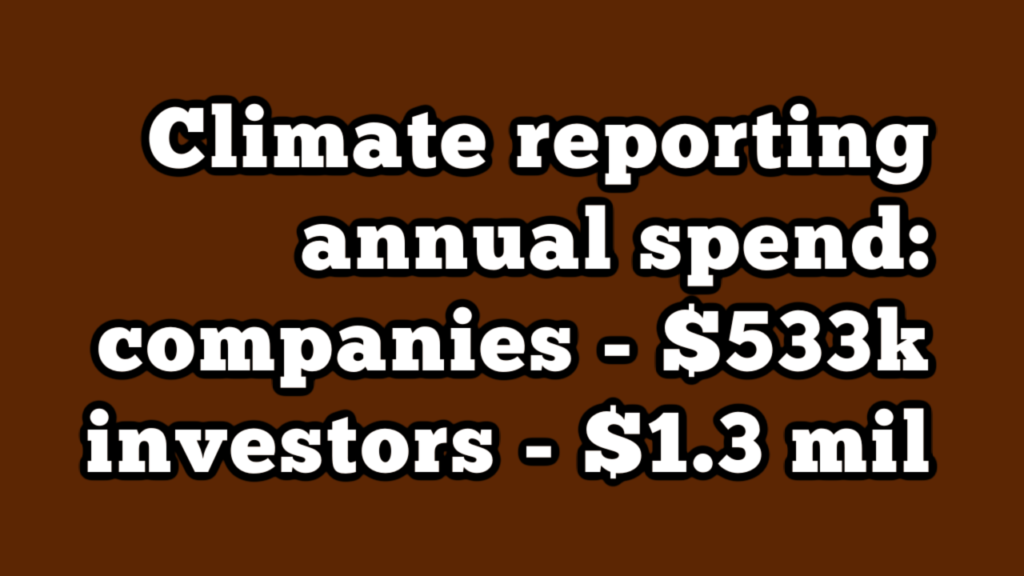Climate reporting annual spend: companies -$533k; investors – $1.3 million

Here’s an article by Kristina Wyatt about this new study on costs of disclosure to both companies and investors:
On May 17th, ERM issued a report, “Costs and Benefits of Climate-Related Disclosure Activities by Corporate Issuers and Institutional Investors.” The report, commissioned by Persefoni and Ceres, surveyed companies and investors and found that the responding companies average $533,000 per year on climate-related disclosure activities. This data is important in the context of the SEC’s proposed climate disclosure rules because it shows that companies aren’t starting from scratch. Many companies are already doing a lot of climate reporting even absent new disclosure rules. What’s more, these costs don’t reflect the use of new technologies, which should reduce reporting costs for companies.
But the costs to companies are just just a piece of the puzzle. The survey also found that investors spend an average of $1,333,000 annually gathering and using climate-related information. This strikes me as a reasonably solid indicator that this information is important to investors in making their investment decisions – that is, the information is material.
Of the $1,333,000 that investors spend each year, the survey found that the largest chunk of the spend – $466,000 – goes to external ESG ratings, data providers, and consultants. You might wonder whether investors purchase these ratings for the raters’ analyses of the rated companies. It appears that is not the case. An ERM report from 2020 asked investors how they use ESG ratings and found that they “often use the data but explicitly not the scores from a rating.”
If in fact large investors spend significant sums on ESG ratings for the underlying data they provide, shouldn’t that data be available broadly to all investors? Why should only well-heeled investors who can afford expensive research have access to the information they need to analyze companies’ climate risks? The SEC’s proposed climate disclosure rules offer to level the playing field and give all investors, and the markets broadly, access to the same critical climate-related information at the same time.
And here’s a note from Bob Eccles about the study:
The SustainAbility Institute by ERM conducted a survey of 39 companies and 35 investors regarding the benefits and costs of climate-related disclosure activities. This study was commissioned by Ceres, Inc. and Persefoni. The survey results were published in the report “Costs and Benefits of Climate-Related Disclosure Activities by Corporate Issuers and Institutional Investors” by Mark Lee, Emily K. Brock, and Doug MacNair. The survey findings are quite relevant for the SEC’s proposed rule for “The Enhancement and Standardization of Climate-Related Disclosures for Investors.” I have written up a summary of this excellent report, along with my interpretation of the results. In my view, the costs are relatively modest and the benefits are quite substantial for both companies and investors.
